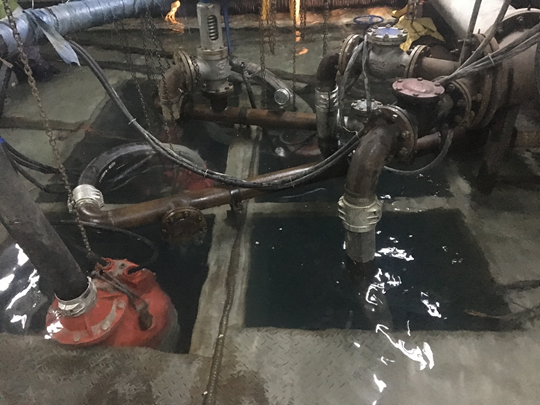A new approach to tunnelling dewatering in the Yellow River Tunnel Project
The mountain topography of the Yellow River Tunnel Project in Xiao Yi, China, required much more water to be removed than originally surveyed. Fortunately, The CMC Construction Company's new approach to tunnel dewatering - backed up by Grindex submersible pumps - could evacuate water faster and construction could go ahead without delays.
The company responsible for the tunnel project is Italian construction company CMC and their joint venture partner Sinohyro. One of the unique features with this project is the dewatering metehod perfected by CMC, which is faster and cheaper to build, and much more flexible than standard tunnel dewatering methods.
The new dewatering approach uses a series of small steel sump tanks throughout the ventilation tunnel as opposed to one large concrete sump tank. As the tunneling progresses, new steel tanks are added to the dewatering system. This means the ventilation tunnel is much smaller than in traditional tunnel projects – which significantly cuts construction time and costs. Furthermore, multiple submersible pumps are used as and when required, as opposed to a single conventional dry-installed pump.
“Using submersible pumps in this way offers enormous benefits,” says Grindex China Chief Representative, Larry Lee. “When you have one conventional pump you have to over-dimension the size of the motor to account for excessive flows. That’s a lot of extra costs – both initial investment and running costs – for capacity you may never use. With submersible pumps you can just add new ones as and when you need them. Also, any pump repairs can be done without causing delays as reserve pumps can be used in their place.”
The dewatering method perfected by CMC is faster and cheaper to build, and much more flexible than standard tunnel dewatering methods.
This dewatering approach proved invaluable in the Xiao Yi project, as the seepage rate of mountain water was almost four times the projected rate. 1km into the tunnel build, extra pumps had to be added to the tanks to handle 216 l/s (57g/s) as opposed to 50 l/s (13g/s). To manage such large amounts of water, 23 37kW Grindex Maxi pumps – 18 in 3 tanks and 5 in reserve – are installed at the plant.
“We chose Grindex pumps because they are so tough,” says CMC Project Manager, Liverani Roberto. The conditions require pumps that can start and stop as much as 30 times an hour. That’s a big task for any pump, but Grindex pumps manage it without any issues. They are also compact, powerful, portable units, making it easy to move them in the tunnel.
“To date, the Grindex Maxi pumps have pumped around 2.5million m3 of water from the tunnel, without a single breakdown. This highlights the high quality of Grindex dewatering pumps, which we know we can rely on. Providing a smooth evacuation of tunnelling water – particularly in a project like this, with such a large amount of seepage water –ensures the safety of the team working in the tunnel,” concludes Lierani. Read the full case story >>

